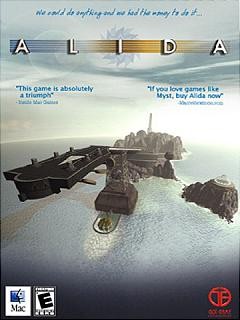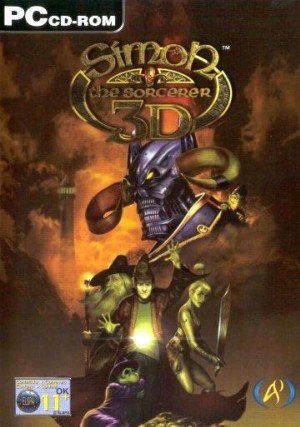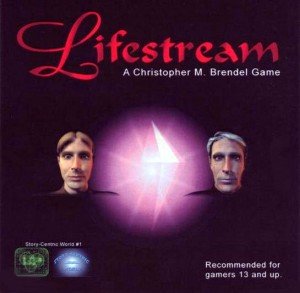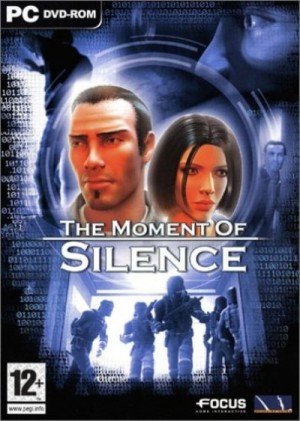Review for DS Ports: Ankh and CSI: Dark Motives

We love 'em, but let's face it: adventure games aren't exactly famous for their high technical specs, awe-inspiring graphics, or groundbreaking physics systems. It doesn't take a lot of horsepower to tell a good interactive story, but this understated approach has ensured the adventure genre remains a niche loved by its diehard fans and more or less ignored by the general gaming public. For a while there, it was looking like adventures could go the way of the dinosaur--err, I mean the Commodore 64--or at least that they'd be forever relegated to the back shelves and bargain bins by an industry that had grown too big to appreciate the minimalist approach most adventure games take. Then the skies parted, the angels sang, and the Nintendo DS dropped from the heavens.
Hyperbole aside, the handheld DS's low specs, touch screen, and stylus make it ideal for the simple graphics and point-and-click interfaces adventure games are known for. Now in its fourth year, the DS has already become a popular system for the genre, with titles such as Another Code / Trace Memory, Hotel Dusk, the Touch Detective series, and the evergreen Ace Attorney series leading the way, but with only a few such releases hitting each year, the offerings have been sparse for hungry adventure gamers.
Now that PC developers have had a little time to catch up, we're on the brink of a larger and potentially more pervasive phenomena: DS ports of existing PC adventures. But is squeezing (relatively) low-spec point-and-click PC games onto the DS as much of a no-brainer as it seems? I took a look at two early adopters to find out: CSI: Dark Motives, the second installment in the prolific forensic crime-solving series, and the first chapter in Deck13's comedic Ankh trilogy. Dark Motives for DS came out in November 2007, while Ankh: Curse of the Scarab King, after some delays, hit retail in the UK this past November.
CSI: Dark Motives
CSI: Dark Motives was developed by 369 Interactive and originally released for PC in 2004 by Ubisoft. The game puts the player in the shoes of a rookie agent in the Las Vegas crime lab, on a team with the cast of the popular CSI television show. In each of the game's five cases, the anonymous first-person player character investigates a grisly crime with the help of a different cast member. The straightforward, no-nonsense gameplay includes combing the crime scene and related locations for clues, processing evidence in the crime lab (with ample help from resident lab tech Greg Sanders), and questioning suspects to uncover the truth.
CSI is an interesting choice for a DS port. Aimed squarely at adults, it's darker and grittier than most of the games coming out for Nintendo's handheld--a rare Mature game among a deluge of Teen and Everyone ESRB ratings--and the realistic graphics are a stark contrast to the stylized cartoon and anime artwork common in DS releases. Yet at its core, CSI's formula is similar to the Ace Attorney games that have done so well on the platform, with investigative and interrogative gameplay carrying the player through five successive cases. The hands-on forensics of a CSI game could make for some unique puzzles involving the touch screen, but you won't find anything like that in Dark Motives. This is strictly a port of the PC version.
CSI uses a first-person perspective, so you see the world through your character's eyes. In some scenes, you can pan 360 degrees by touching the stylus to the edge of the screen, while in others, panning isn't available and you can only see what's in front of you. Tapping with the stylus moves the arrow-shaped cursor around the scene, allowing you to interact with certain areas, and tapping on a person starts a conversation. The cursor changes from blue to green when it's over a selectable area, cluing you in to the fact that there's more to be done here.
This is pretty standard point-and-click gameplay, but using the stylus instead of a mouse has its disadvantages. On the PC, you have the luxury of "sweeping" over an area with the mouse to look for interactive hotspots, but on the DS, you're stuck tapping all over the screen in hopes of stumbling upon one. You can drag the stylus all over the screen if you really want to, but I try not do that too much due to the hairline scratches it can cause. Unfortunately the +Control pad can't be used to control the cursor in Dark Motives. Since many hotspots are very small and the entire game is very dark, making it hard to identify which areas might be worth giving a closer look, I found this "tap everywhere" method of investigation a bit frustrating. It doesn't help that even once you've completed everything you can in an interactive area, the green arrow will continue to taunt you when the cursor moves over that spot, so there's no obvious way to tell when your work in a particular scene is done.
The graphics in Dark Motives are largely static, with the CSIs and other NPCs holding the same pose throughout a conversation and no ambient animations in the environments. This can be annoying in the PC version but works well on the DS's small screens. Fans of the CSI TV shows will appreciate the clips of Las Vegas when you move to new locations, and the animated forensic reconstructions that play as the investigators talk through their theories of the crime.
Dark Motives has a fairly complicated interface, with evidence to keep track of, a slew of collection and detection tools that can be used in the field, and a detailed case file where information about the victim, suspects, and evidence is organized as you go through the investigation. On the PC, this is all accessed using the mouse via on-screen icons. With the DS's much smaller screens, though, there isn't as much real estate for on-screen icons. Instead, the case file is displayed on the top screen, with the rest of the interface crowded at the bottom of the touch screen. The stylus can be used to access evidence and tools, while the right and left shoulder buttons are used to navigate through the case file. It works, but it would have worked better if the interface had been redesigned and simplified.
On PC, Dark Motives' major selling point was that it features the voices and likenesses of the entire CSI cast. The DS version still has the likenesses, but no voice acting (it does have ambient music and some sound effects, though). The dialogue is a bit over-the-top and hard to believe when you're just reading it rather than hearing it spoken and I found myself skimming a lot of it. The lack of voice acting is a problem in the reconstructions, since the subtitles are timed to the animation and sometimes go by too fast to read. Also, with the subtitles on the bottom screen and the reconstruction on the top screen, I missed most of the animations since I was so busy trying to read the words. You do have the ability to replay the reconstructions, but I was disappointed that an aspect of the game that was supposed to be a payoff instead started to feel like busywork.
Each Dark Motives case took me about two hours to play. On all but one of them, I needed to consult a walkthrough, usually because I had missed a hard-to-see hotspot along the way. The CSIs offer hints but these often didn't relate to where I was stuck. For example, I'd be unable to get a warrant, in spite of seeming to have loads of evidence, yet all my partner wanted to talk about was a piece of evidence that Greg the lab tech had already told me he'd done all he could with. As a handheld, the DS is perfect for gaming on the go, but on an airplane or in the dentist's waiting room you probably won't have a walkthrough handy, making the in-game hint system's shortfalls disappointing. That said, you can always fall back on the tried and true "revisit every location and drag the stylus across the screen looking for hotspots" strategy--and pray that your screen doesn't get scratched in the process.
I only encountered one apparent bug during my playthrough: I didn't lift a fingerprint off a piece of evidence before picking it up, and later couldn't seem to lift the fingerprint when I viewed the evidence in my inventory. Since the fingerprint was needed to trigger the next part of the case, I had to start over. I don't know if this also occurs in the PC version. Luckily it happened close to the beginning of the case, so I didn't have to replay too much.
With the exception of the few DS-specific issues I've called out here, playing Dark Motives on DS is basically the same as playing it on PC. (For more details about the gameplay, check out Adventure Gamers' review of the PC version.) Dark Motives isn't a blockbuster by any means, but if you go into it with realistic expectations about the type of game it is, it's not a bad experience on the DS. If you're a fan of the CSI games or TV show, or if you're looking for a Phoenix Wright-type game that's a bit darker than the norm, Dark Motives on DS is worth checking out.
I wish I could say the same about Ankh: Curse of the Scarab King, but unfortunately that's a port with a lot of problems.
Ankh: Curse of the Scarab King
The inaugural adventure of German development studio Deck13, Ankh is a comedy game that compares itself quite liberally to the LucasArts adventures of the 1990s. The original PC release was a real-time 3D game with a third-person perspective and a point-and-click interface. The player takes the role of Assil, a troubled ancient Egyptian teen who has been inflicted with a death curse by an angry mummy. While seeking an audience with the Pharaoh and Osiris to get the issue cleared up, he hooks up with a girl named Thara who becomes a playable character for a portion of the game. When Ankh was released in 2006, its tongue-in-cheek humor and colorful cartoon artwork set it apart from the dark, serious games that had become common in the genre, and the game became popular enough to warrant two sequels.
On DS, the real-time 3D graphics have been replaced by prerendered 2D backgrounds and character sprites that can be moved across the screen either by tapping the stylus where you want them to go, or using the +Control pad. Dragging the stylus makes the character run, which is nice at points when you have to backtrack through several screens, but unfortunately there's no +Control pad equivalent for running. Most of Ankh's action takes place on the touch screen, with a map and close-ups of certain graphics occasionally displaying on the top screen and cutscenes sometimes spanning them both.
The characters in Ankh are more animated than the stock-still CSI cast, but their gestures are jerky and unnatural, and often don't match the tone of what's being said. This is true in the PC version as well, but for some reason it stood out to me more on the DS. Granted, the exaggerated gestures are a lot more lifelike than CSI's statue impersonations, but I'd welcome a balance between these two extremes.
In addition to being used for movement, the cursor has several states that allow you to interact with the environment, including "look at," "use," and "pick up." On PC, Ankh employs a smart cursor that changes to the most appropriate state for the hotspot you're interacting with, but in the DS version, the cursor doesn't change automatically and you must select the state yourself from a bank of icons at the top of the touch screen. This can become tedious because you need to anticipate if you're supposed to look at, pick up, or use something, and if one of these states doesn't work, the game doesn't provide adequate feedback for you to know you should try another state. Several times, I missed items and then had to go back to get them, because I assumed incorrectly that I had exhausted an item's usefulness by looking at it.
This is the first DS game I've played that has full voice acting, not only in the cutscenes, but also when the player character is just poking around. I wish I could say this is a plus, but it's so poorly implemented I ended up turning off the volume. The problem is that the character communicates out loud every time you try to do or select something. In a PC game, this would be fine, because you can sweep the cursor over the screen, looking for active hotspots, before making a commitment and clicking. On the DS, the step where you move your cursor around to investigate has been removed, and the only way to find out if an area is selectable is to tap it with the stylus or select it with the A button, at which point, more often than not, Assil or Thara says "It doesn't work." This gets old fast.
This necessity for haphazard tapping is similar to the cursor issues I experienced in CSI, and in both ports I wish more thought had been put into how the player interacts with the game world, rather than simply slapping the PC behavior onto a handheld. Although the stylus and the mouse are similar, they don't work exactly the same way, and trying to use the stylus as if it were a mouse doesn't work well in either CSI: Dark Motives or Ankh: Curse of the Scarab King.
Another problem Ankh shares with CSI is that some hotspots are too small or too subtle, often blending into the backgrounds. Ankh's backgrounds are crammed with detail, and hotspots that stand out perfectly well on a PC screen can be practically invisible on the much smaller DS screen. As a result, I once again found myself clicking all over the place in hopes of finding interactive objects (with Assil and Thara's repetitive voice lines making this practice even more annoying than it had been in CSI), then going to a walkthrough because I'd missed a tiny or inconspicuous hotspot.
Although you switch between Assil and Thara at points in the game, in the DS port you can't pass items between them. Since Ankh was originally designed based on the premise that you'd be able to pass items between the two characters, this limitation can lead to a dead end situation at least once that I encountered. In fact, this port has several egregious bugs that make me wonder how it got through Nintendo's approval process. I encountered three showstoppers that prevented me from continuing. Two were logic issues that I was able to work around by loading previous saved games, but according to a post on the publisher's tech support forum, the last bug, which happened about two thirds of the way through the game, would have required turning off background music (which is on by default) and starting over from the beginning. No thanks. These bugs suggest the game was rushed out the door, and should give anyone considering playing the DS port serious pause--especially if you're going to pay full price for it.
Unlike the gameplay in Dark Motives for DS, which remains almost identical to the PC version, some of Ankh's puzzles have been simplified, presumably because they didn't translate well to the new 2D perspective and the DS's small screens. This is most obvious in a section that takes place in Osiris's temple. The original puzzle involved repeating a series of steps depicted on an Egyptian mural. In the DS version, the same mural is displayed as on PC, with Assil and Thara drawing the same conclusions when they view it, but the steps you actually need to follow have changed. Whatever the reason for making such a change, it's a sloppy execution that reeks of the developers looking for a quick fix without following through to ensure a fair solution for the player. This problematic puzzle was made more difficult by the fact that either Assil or Thara could pick up an item, then not pass it to the other. Each needs to be holding a specific set of items for the correct solution, so as I flailed around, trying to follow the steps laid out in the inaccurate mural, I never knew if I was on the right track or if I'd already shot myself in the foot by distributing my inventory incorrectly.
Curse of the Scarab King's multitude of problems were all the more disappointing since I had high hopes for Ankh on the DS. I'm okay with CSI-style gameplay, but I'll take a third-person story game over a forensic crime game any day. But after my glitchy, frustrating experience playing it, I unfortunately can't in good faith recommend this port to anyone but the most diehard DS devotees (and maybe not even them). If you've already played the game on PC, you've already experienced it in a much more enjoyable format. If you haven't played it yet, the PC version is the way to go.
But Wait, There's More!
CSI: Dark Motives and Ankh: Curse of the Scarab King were some of the first, but there are several other DS ports of PC adventures already out (including Myst, Runaway: Dream of the Turtle, and Secret Files: Tunguska) and more on the way. So let's get that hyperbole back in here. Are ports like this harbingers of great things to come, or the downfall of the entire handheld adventure genre as we know it?
Neither, of course, but they do have the potential to beef up the DS's adventure catalogue, provided future efforts are able to avoid the most annoying pitfalls that plagued the first two I played. CSI: Dark Motives and Ankh: Curse of the Scarab King would both have been more enjoyable if more consideration had been given to optimizing the interface and controls and making the hotspots easier to find. Tweaks like these, with a few (dare I suggest it?) DS-specific puzzles thrown in for good measure, could breathe new life into some of our most beloved PC adventures and introduce them to an entirely new gaming audience. Let's keep our fingers crossed.






























